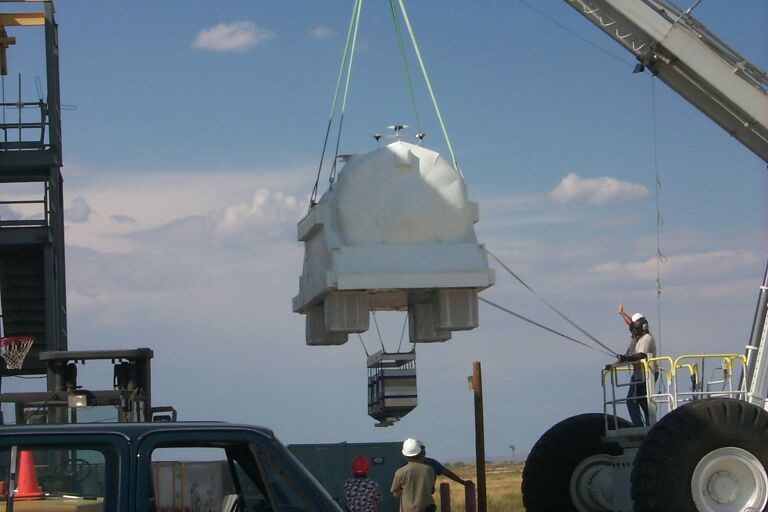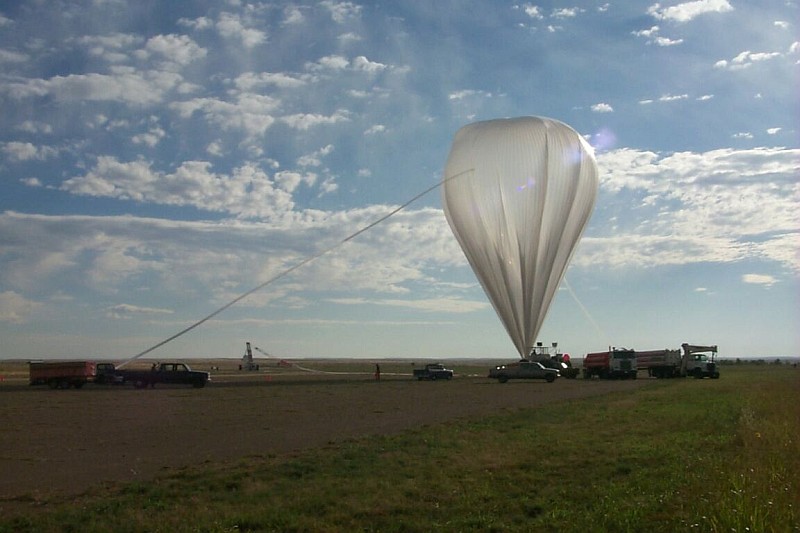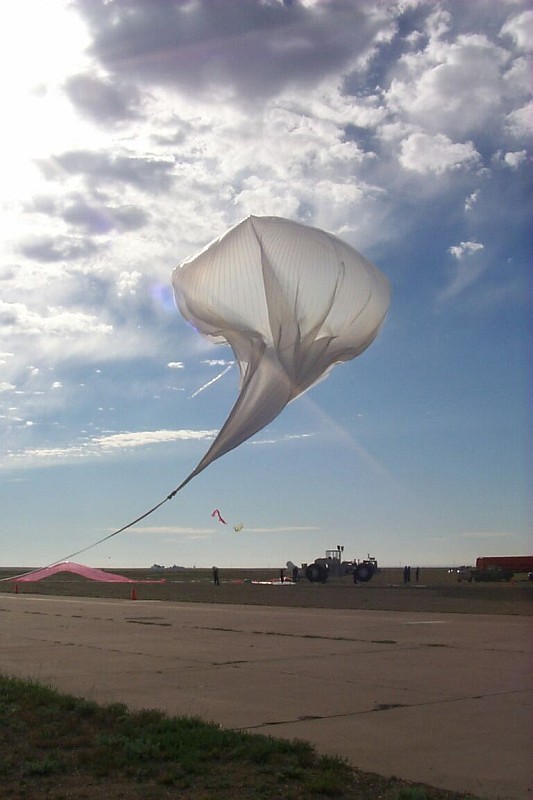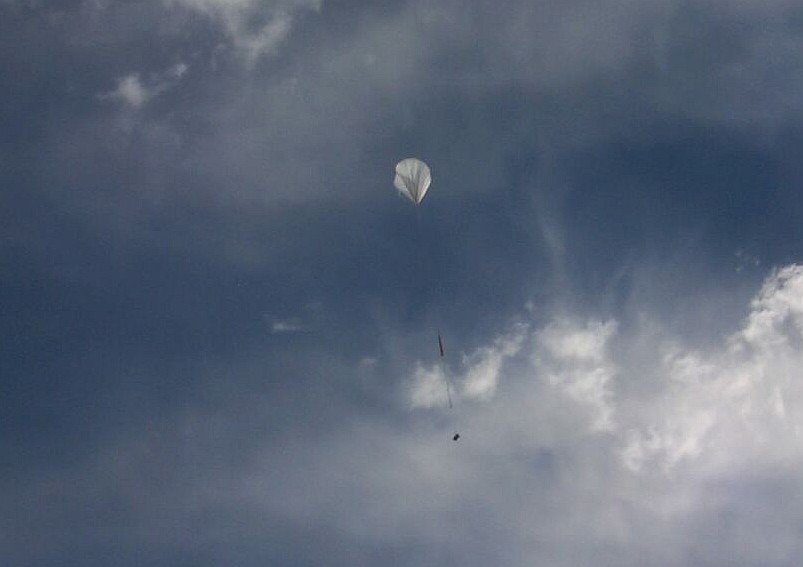Purpose of the flight and payload description
BESS (Balloon-borne Experiment with a Superconducting Spectrometer) was a joint project of Japanese and US scientists to search for antimatter in the cosmic radiation, as well as measure energy and intensity of less exotic components of the cosmic radiation.
The BESS program had 9 successful flight campaigns since 1993. The instrument has been modified and improved each year.
Historically, the various versions of the BESS instrument have consisted of large solenoidal thin-wall superconducting magnet, a time-of-flight system of scintillation counter hodoscopes, inner drift chambers (IDC), a jet-type drift particle-tracking chamber and an aerogel Cherenkov counter (which replaced outer drift chambers used in the first flights). All the components are arranged in a horizontal cylindrical configuration with the IDC and Jet chambers located inside the warm bore of the magnet.
Details of the balloon flight
Balloon launched on: 9/20/2001 at 15:15 utc
Launch site: Scientific Flight Balloon Facility, Fort Sumner, (NM), US
Balloon launched by: National Scientific Balloon Facility (NSBF)
Balloon manufacturer/size/composition: Zero Pressure Balloon 1.120.000 m3 - SF3-39.57-.8/.8/.8/.8-NHR
Balloon serial number: W39.57-3-26
Flight identification number: 499N
End of flight (L for landing time, W for last contact, otherwise termination time): 9/20/2001
Landing site: Balloon failure. Payload landed 40 miles NNW of Melrose, New Mexico, US
Balloon and payload failed.
External references
- Measurements of 0.2 to 20 GeV/n cosmic-ray proton and helium spectra from 1997 through 2002 with the BESS spectrometer Submitted to Astroparticle Physics
- Old BESS website University of Maryland
676If you consider this website interesting or useful, you can help me to keep it up and running with a small donation to cover the operational costs. Just the equivalent of the price of a cup of coffee helps a lot.





